One of the most common questions I get asked is… “How can I teach my child to feed themselves?” Self-feeding is a big deal for tired parents of babies, toddlers, and in some cases, older kids! I was motivated to teach my own kids at a young age because that meant I could sit back and enjoy my own meal again… well, mostly. It is also a skill I have worked on, A LOT, with kids of all ages and abilities as an occupational therapist.
How to Teach Self-Feeding for Babies, Toddlers, and Beyond
In this complete self-feeding guide, I’ll tell you how to teach your baby or toddler to:
- finger feed
- eat with a spoon
- eat with a fork
Each are actually their own independent skill, and they’re typically achieved at different ages. I’m giving you the age guidelines to look for as your child works towards mastering feeding themselves and my OT/Mom strategies for how to help them learn those skills. Of course, I’ll share the best utensils for babies and toddlers learning to self feed, too! So, let’s get started…
Affiliate links used below. See our full disclosure.
When do Babies Start to Feed Themselves with Their Fingers?
Most babies start feeding themselves those little melt-able puffs right off their tray around 8 months. Initially, you will notice that they grasp the food with their whole hand in a raking motion. They often get a bunch in their hand at once and will try to shove their whole hand into their mouth.
This is a fairly ineffective method, but they manage.
Over the next few weeks and month or two, they will begin to use multiple fingers to pick up food, instead of their whole hand. They’ll continue to refine that movement until they use just their index finger and thumb in a pincer grasp (see the pic below) around 9 months old (but it could range from 7-11 months).
The pincer grasp is important because is lays the foundation for future fine motor skills like writing. Find out more about when to give finger foods to your baby and how to teach them to eat finger foods.
How to Teach Your Baby/Toddler to Use their Fingers to Self-Feed
If your baby or 1 year old isn’t making any effort to use their fingers to feed themselves, make sure you’re giving them opportunity to try and try again, even allowing them to struggle a little. That is how they learn! Give them foods like puffs that are dry and big enough to pick up, but not so big they could choke. (I also like to use these cheese curls or pea crisps designed for babies broken into small pieces).
Most kids are motivated to eat and will figure out how to get it into their mouth. For those that want to eat, but can’t figure it out, the problem sometimes arises with the pincer grasp.
If they aren’t isolating their finger and thumb, set aside some time at the beginning of their meal to give them one piece of food at a time. Try placing one singular puff on their tray first, without a boat load of puffs, they may isolate those fingers for you. If they don’t use the pincer grasp, hold it up in front of them, because it’s easier to grab it out of your fingers instead of off their tray or plate.
Don’t let go of the piece of food until you see them grabbing it with their index finger and thumb. Spend just a few minutes “practicing” at the beginning of the meal, and then let them finish their meal normally so they don’t get too frustrated. Likely, it won’t be long before they have mastered this new skill!
For other foods, trying cutting them into cubes and if they’re squishy like a banana, rolling pieces in crushed dry cereal so they have something to grip.
When Will Your Toddler or Baby Eat with a Spoon?
Occupational therapists look for toddlers to be feeding themselves with a spoon without any assistance by the age of 2. However, most kids are capable of learning much younger than that if they’re given the opportunity. By one year of age, many toddlers proficiently and messily feed themselves with a spoon. If you struggle with the messiness of self feeding, read: Why You Should Let Your Kid Get Messy Eating.
Teaching Your Toddler (or Baby) to Self-Feed with a Spoon
As with finger feeding, the most important thing you can do initially to teach your baby or toddler how to use a spoon is to give them lots of opportunities to try.
Again, this will be messy. That’s okay! The mess is actually helpful for desensitizing them to various textures and help prevent more extreme picky eating in the future.
In the very early days of feeding your baby, this means giving them their own spoon to practice bringing to their mouth while you feed them. This allows your baby to associate the spoon with eating and they get to work on their fine motor skills a little too. Hopefully, your child will put it to their mouth intermittently as you’re feeding them, encourage this.
Once they start to put the spoon to their mouth, put your hand on top of theirs and dip it into the bowl you’ve been feeding them from together, put just enough on the spoon for them to taste. Do this a few times throughout the meal until they start to get the hang of it themselves.
Once they dip and bring the spoon to their mouth several times, it’s time to give them their own little bowl while you are feeding them. I know, they’ll throw the bowl, but you can either keep a hand on it, or use a…
…Suction bowls are awesome and will help keep them from tossing the whole bowl on to the floor. The trick is to only give them a little food in the bowl at a time. At this point, you are still feeding them most of the meal. If they are doing well scooping up food and at least getting some of it into their mouth, put more and more food into the bowl for them to feed themselves.
Once you reach this point, your child is probably around 8- 10 months old, assuming you started feeding them baby food at 6 months. If the mess is becoming too distracting, which it likely will, gently remind them that food goes in their mouth. Try to remember that the mess and playing with food is all part of the process. I know it is challenging, but it is short lived.
Another frustration that often pops up is throwing their bowl or food. Check out How to Stop Babies from Throwing Food for more tips.
You will continue in this way with 2 bowls until you are giving them more and more of the actual food and less bites from your spoon. When they are feeding themselves most of the meal, you can stop using your own bowl. In a short time, you will only be occasionally helping them with a large bite or when they turn the spoon the wrong way.
If you’ve been steadily teaching them how to use utensils, then they’ll likely be independent around 14-16 months old.
Although, it will continue be a supervised process for some time. Also, they will be fairly messy eaters for a while, don’t worry about the food that falls on their bib and chin. I hope I’m not the bearer of bad news, but they will eat like this until about 2 – 2 and 1/2. On the upside, their independence gives you a chance to actually eat your own food!
It is also helpful to keep in mind that thicker foods like yogurt and pudding will be easier to scoop and keep on the spoon. Thinner textures may be frustrating initially.
If you’re toddler isn’t showing much interest or are having a hard time manipulating the spoon, then help them by putting your hand on top of theirs and moving through all the steps of scooping and putting the bite into their mouth (as in the pic below).
See my top picks for spoons at the end of the post!
Affiliate links used below. See our full disclosure.
When Will Your Toddler Feed Themself With a Fork?
Introduce fork feeding after they mastered using the spoon and have a nice pincer grasp for self feeding. Again, we look for kids to be capable of using a fork by age 2, although most will prefer to use their fingers, which is fine. Kids are capable of using a fork around 15-18 months.
Teaching Your Toddler to Self Feed with a Fork
Begin by placing a safe toddler fork on their plate or high chair tray with a food that’s really easy to pierce like cubes of cheese or a chicken nugget. Noodles and fruit are soft, but slippery, and may fall apart.
In the beginning, we want to keep their frustration level down, and give them a chance at being successful, which will motivate them to keep trying. If they’re having trouble with getting the food onto the fork, provide that hand over hand help again until they get the hang of it. Give them as little help as possible as you move along though.
Continue to offer them a fork and at a minimum, encourage them to use it a few times a week until they are in the preschool years and it becomes more inappropriate to eat everything with their fingers.
The Best Spoons for Toddlers Learning to Self Feed
All three of my boys used these spoons and sporks. I love them because of their wide curved handle, plus the shape allows them to dip only a little and still get a spoonful. That is important in the early days, when their coordination isn’t so hot. I also love the deep bowl of the actual spoon because even when some of the food falls off, it all isn’t lost, which can be really frustrating when their trying so hard.
I love them because of their wide curved handle, plus the shape allows them to dip only a little and still get a spoonful. That is important in the early days, when their coordination isn’t so hot. I also love the deep bowl of the actual spoon because even when some of the food falls off, it all isn’t lost, which can be really frustrating when their trying so hard.
The Best Forks for Toddlers Learning to Self-Feed
I love these little forks because they too have a soft, wide gripped handle which makes it easier for 1 year olds to use and feed themselves with. The best part is that they are metal and will actually pierce something. But the prongs are rounded just enough so that they aren’t dangerous for little ones.
How to Encourage a Toddler to Feed Themselves that Doesn’t Want to
If your child is already a toddler and you missed the steps I just described, it’s okay, you’re still going to proceed in much the same way. You will likely be moving through those early steps more quickly. Many parents don’t think to give their child a spoon so young or are really overwhelmed by the mess that it causes.
With a toddler, it is important to follow their lead and give them as much help as they need, although it is okay to let them struggle a little here, too. Consistency in how often you are presenting them with a spoon and patience go a long way!
I also have to point out here, that sometimes, toddlers know how to feed themselves, or at least are capable of doing so, but may refuse because they are extremely picky eaters. Read more in 5 Reasons Kids Refuse to Eat if you think this may be the reason behind your child’s refusal to self feed.
If your child is struggling to get the hang of feeding themselves or is refusing to try, make sure it is not the potential mess that is bothering them. If you suspect that they don’t like being messy, show them that you have a napkin nearby and give them their own. If they do get a little messy and it upsets them, be quick to clean it up. Check out how to help kids with sensory sensitivities.
Regardless of the reason they are having difficulty: consistency, patience, and practicing together are the keys to progress.
To keep the ideas coming, grab my FREE Must-Have Printable: 9 Tips to Improve Eating, we’ll send it right to your inbox!
More on Feeding Babies and Toddlers
Baby and Toddler Feeding Red Flags
How to Teach Your Baby or Toddler to Drink from a Straw
The Ultimate List of Baby/Toddler Meal Ideas
Did you pin this?
There’s a lot of tips and tools in this guide, might want to keep this one saved!
Alisha Grogan is a licensed occupational therapist and founder of Your Kid’s Table. She has over 18 years experience with expertise in sensory processing and feeding development in babies, toddlers, and children. Alisha also has 3 boys of her own at home. Learn more about her here.
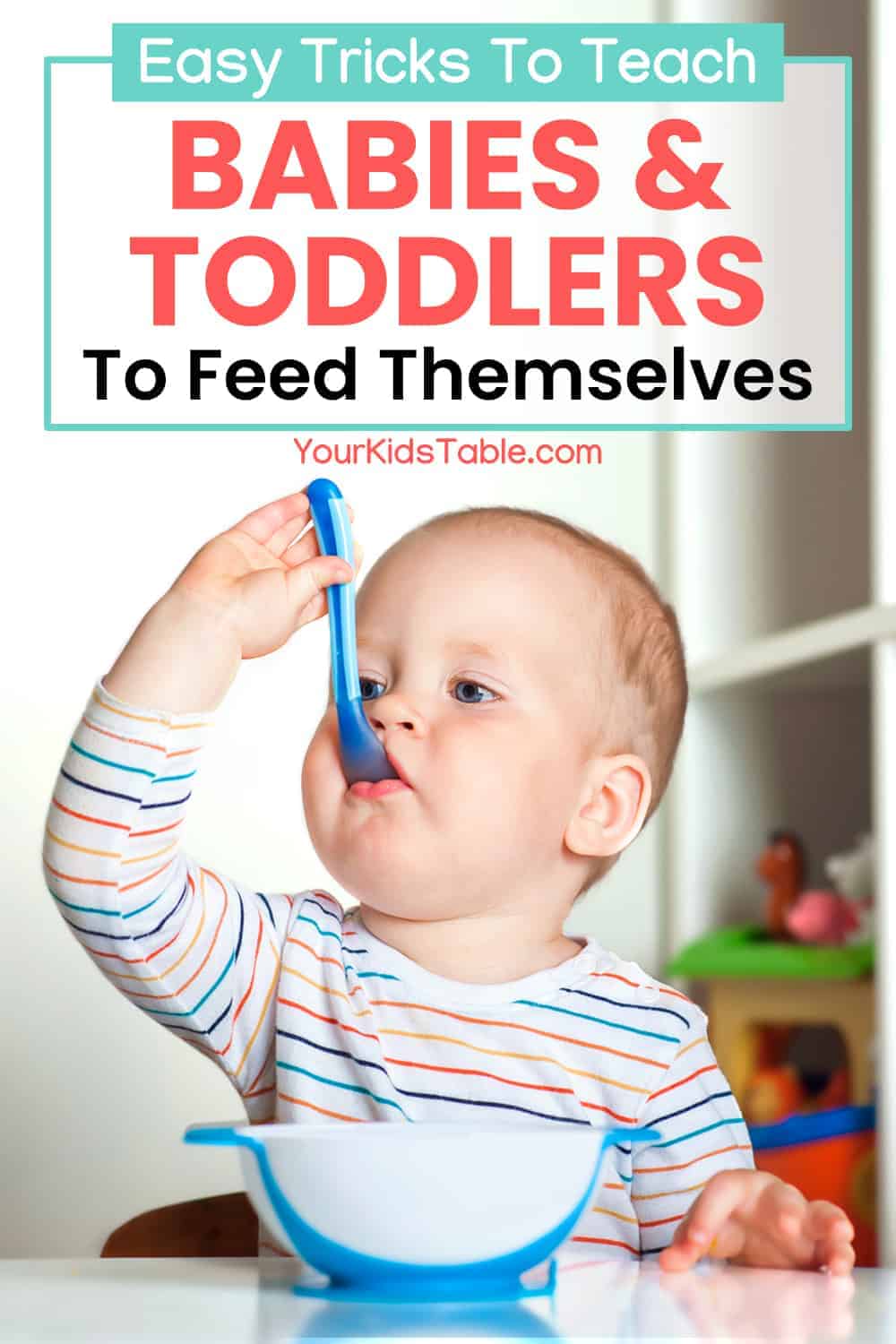
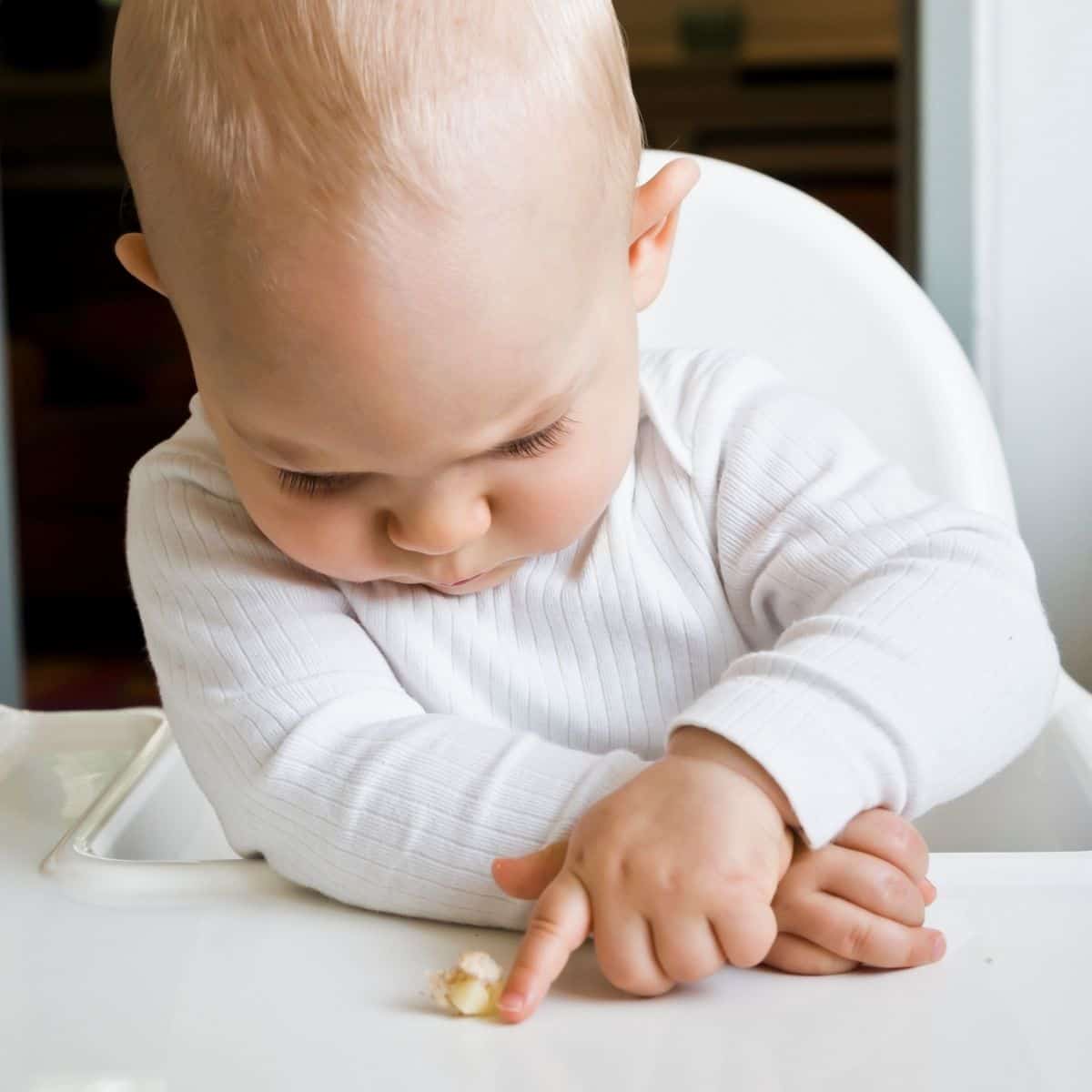
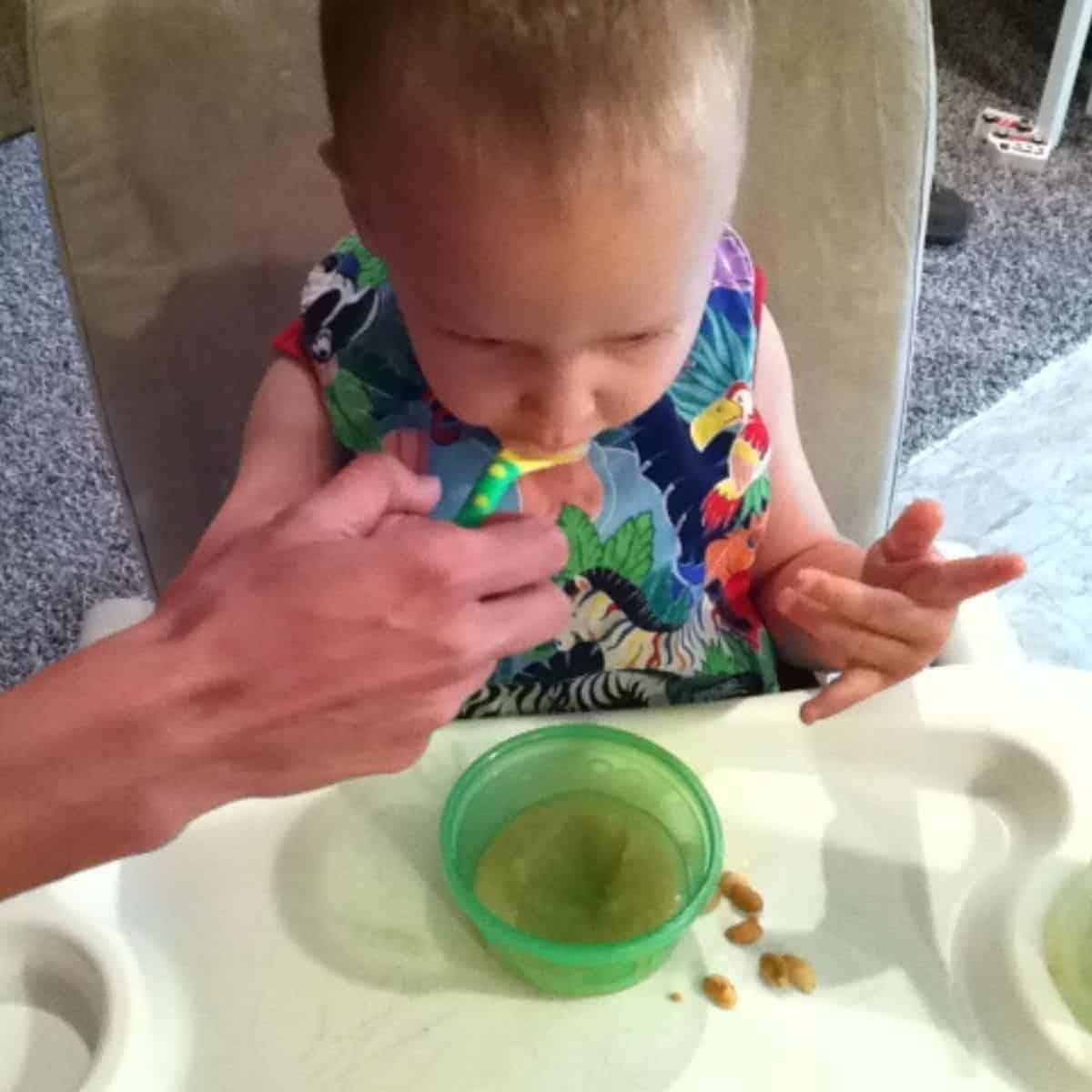
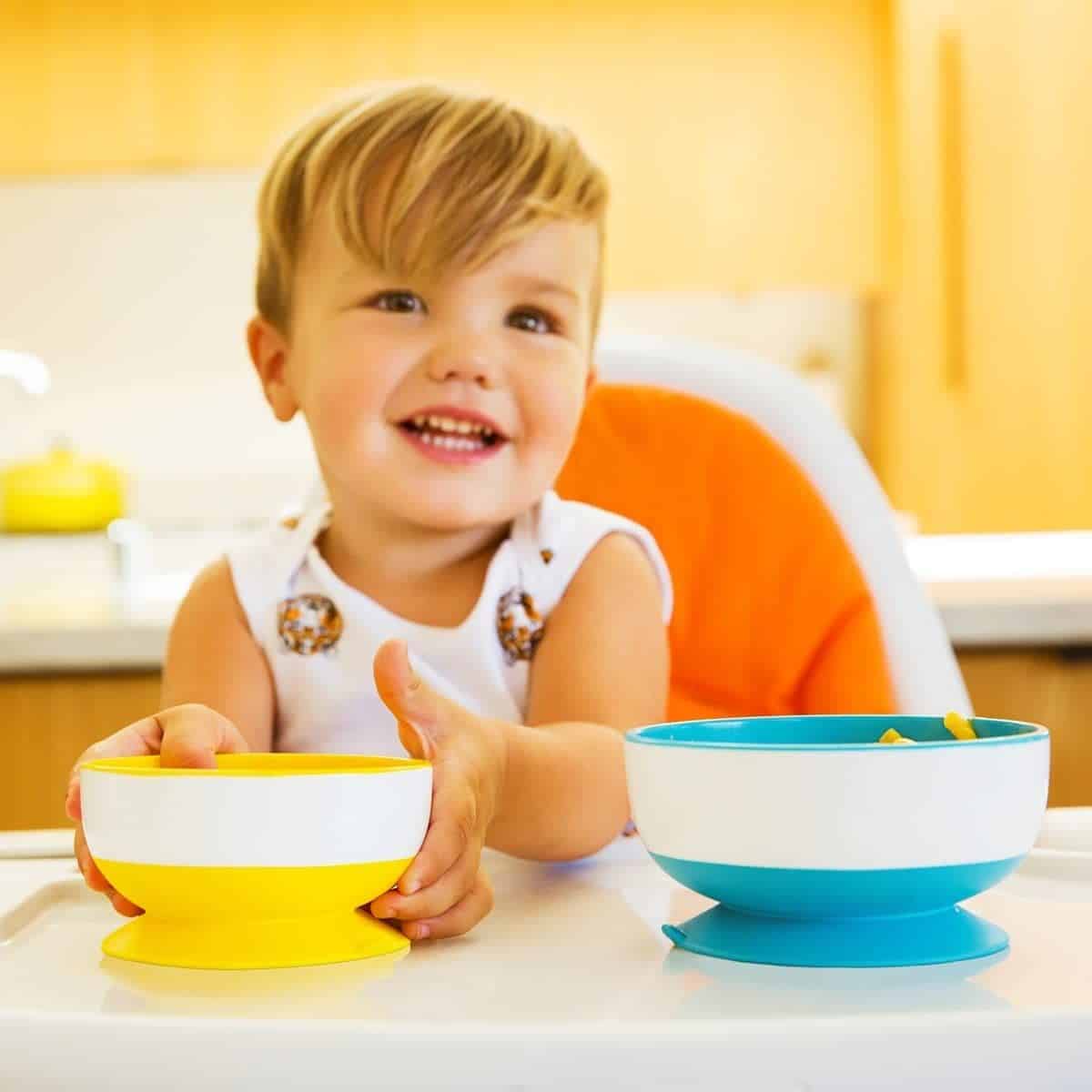
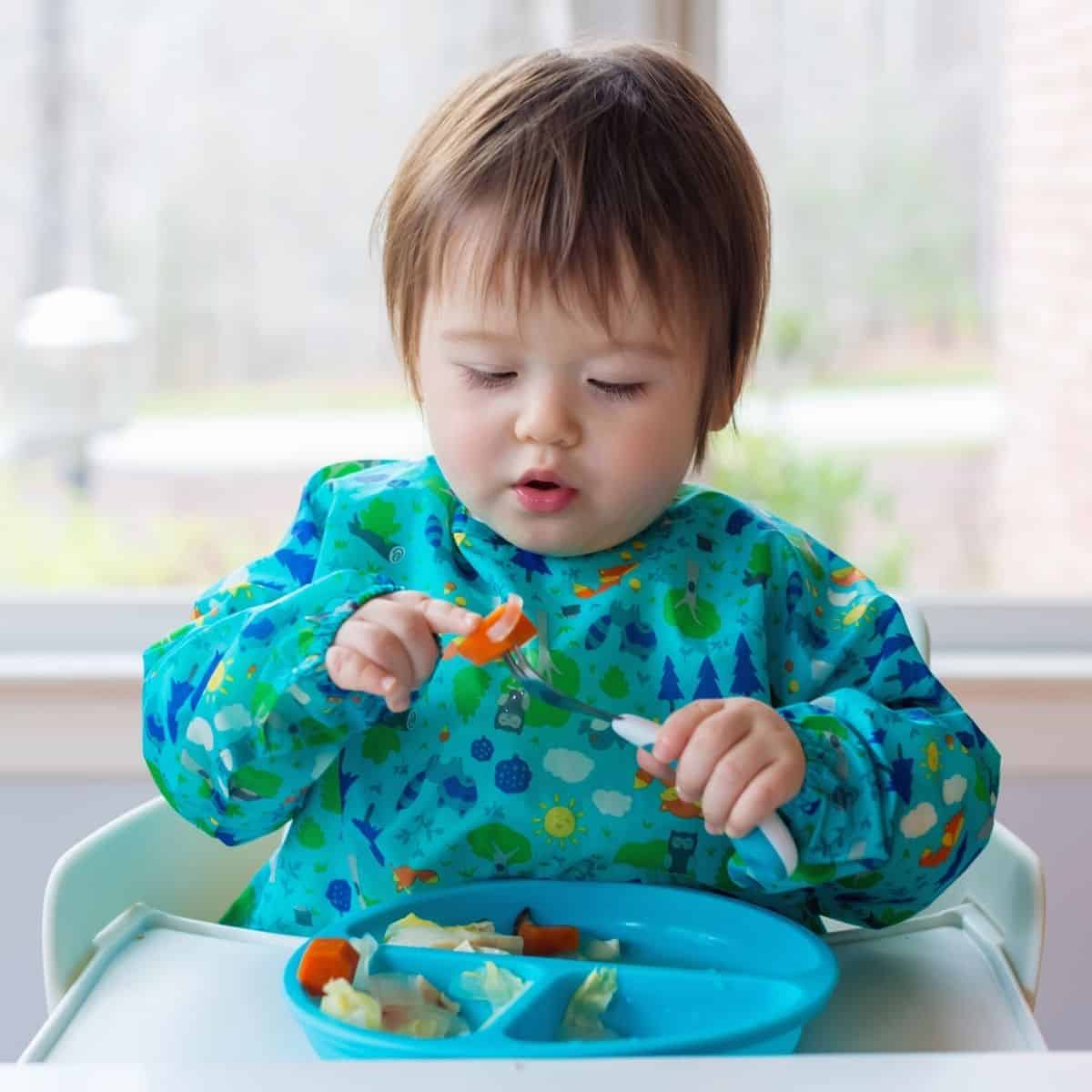
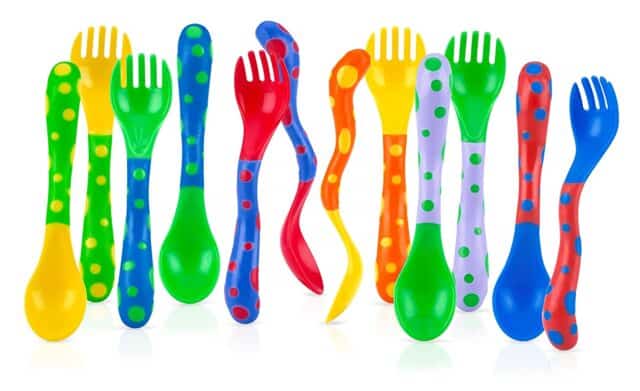
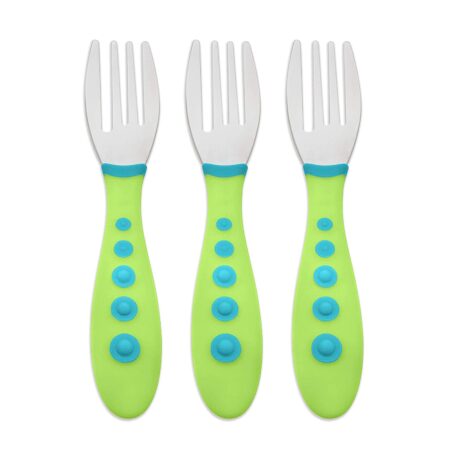

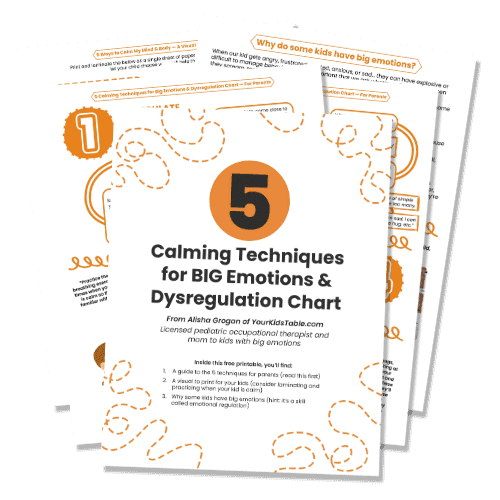
Its been two years i was looking for a solution on google and finally i got an answer i was looking for my toddler 🙏🏻🙏🏻💕 cannot thank you enough for this …
Hi Jahnvi! So glad you found us! Hope this post helps and makes your life easier 🙂
Best,
Kalyn
Hi, our 12mo wouldn’t self-feed even though he could and his rejection is so strong that we worry he might have sensory issues. He could feed himself finger food when he was around 7-8 months old. On good days he would even try to use the spoon and we always encouraged him. But over time he became less and less willing to self-feed, and now (turning 12mo soon) he rejects it completely as if it’s torture. He eats everything and eats a lot, as long as he’s fed. We put pieces of food in front of him at every meal. He’ll either drop them on the floor or ignore them. If we try to put some food (or spoon) in his hand he’ll fuss. If we try to guide his hand to the mouth he’ll throw a tantrum. If we don’t feed him, he’ll cry or try to move his head towards the food but will never use his hands to bring food to the mouth. He sometimes even grabs our hands (when we hold a spoon), or puts our hand on the spoon, but would never touch the spoon himself. I sometimes give him larger pieces of bread so that he’ll have to grab the half that’s left out of his mouth. He would grab it and immediately throw it away. We also tried to put finger food in his play area for some change of environment. He would occasionally mouth on toys although he doesn’t do it very often. But when he notices it’s food, he either drops it on the floor or cries (because he wants to be fed). It’s like he has some kind of psychological barrier that prevents him from bringing food to the mouth. We also tried eating together with him and he’s been going to daycare, where apparently all other children will self feed. But nothing helps. We’re really worried and would appreciate your insights.
Hi there! Thanks for reaching out! We understand how stressful this must be for you and your family. It sounds like you are doing a great job with the different techniques that you’re trying- keep going with those! Just be sure to avoid pressuring him- the less pressure, the more comfortable he will be. Try play feeding, with a doll/toy/stuffed animal, where you demonstrate feeding the toy, and have him try feeding them too. Try having him play with a spoon/fork outside of mealtimes to get him used to the feel of these utensils. Demonstrate feeding with each other and show him how you feed yourself. Just take the pressure away and keep trying! Lastly, consulting with your pediatrician for a potential referral for occupational therapy, would also be very beneficial.
Best,
Kalyn
Hi Cinzia,
I am going through the exact same thing with my daughter who is turning one this week. Did you ever find something that helped to get him to self feed?
I am also going through the same thing! My son was able to feed himself biscuits at 7-8 months but now nothing. Only wants to be fed. Any other suggestions?
Hi there! Definitely try the steps listed in the article. Also, try food play- have him practice with feeding a toy/doll/stuffed animal and also have him feed you! Food play can help him become more comfortable, so then he may want to feed himself.
Best,
Kalyn